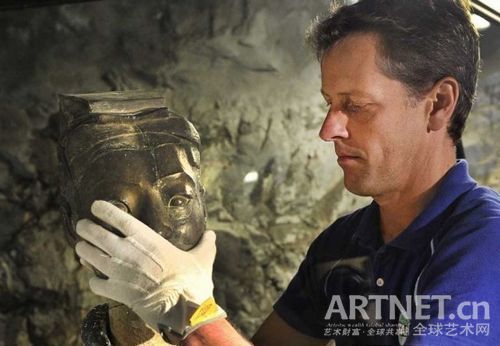Eight of the terracotta soldiers from China's Qin Dynasty and more than 100 terracotta warriors from the ensuing Han Dynasty have arrived in Stockholm for an exhibition in the East Asian Museum starting Aug. 27, sources with the Chinese Embassy said in Stockholm on Monday.
|

Eight of the terracotta soldiers from China's Qin Dynasty and more than 100 terracotta warriors from the ensuing Han Dynasty have arrived in Stockholm for an exhibition in the East Asian Museum starting Aug. 27, sources with the Chinese Embassy said in Stockholm on Monday.
|
"This will be the largest cultural exchange event between China and Sweden and even the whole Nordic region this year to commemorate the 60th anniversary of the establishment of diplomatic relations between China and Sweden," Pu Zhengdong, Cultural Counselor at the Chinese Embassy in Stockholm, told Xinhua.
Pu said that in all 300 pieces of cultural relics, including the Qin and Han terracotta solders, will be on display from Aug. 27 to Jan. 16 next year.
This is the second time for the terracotta soldiers to visit Sweden. The first visit took place in 1984.
The terracotta soldiers will be exhibited in the underground section of the East Asian Museum, similar to their original site in Xi'an, capital of northwest China's Shaanxi Province.
"People can see the terracotta soldiers in a much nearer distance compared with that in Xi'an or during the exhibition in London," Swedish newspaper Svenska Dagbladet (SVD) reported.
The terracotta soldiers were first unearthed in Xi'an in 1974, and opened to the public in 1978. It was China's first emperor Qinshihuang, of the Qin Dynasty (221 B.C.-206 B.C.), who ordered the construction of this large army of life-size figures in his mausoleum.
There were a total of over 8,000 terracotta soldiers, each over 180 centimeters tall, buried around the Qinshihuang mausoleum.
The terracotta tradition was carried on during the Han Dynasty (206 B.C.-220 A.D.).
"This shows how China was developed at that time and it even had relations with central Asia, even as far as Iran," SVD said in its report.